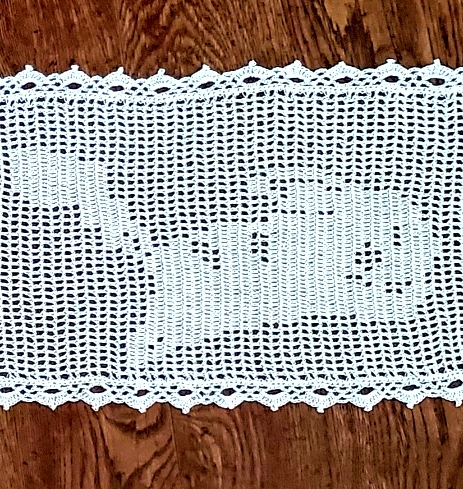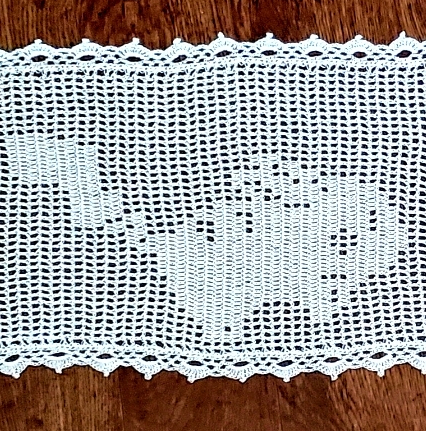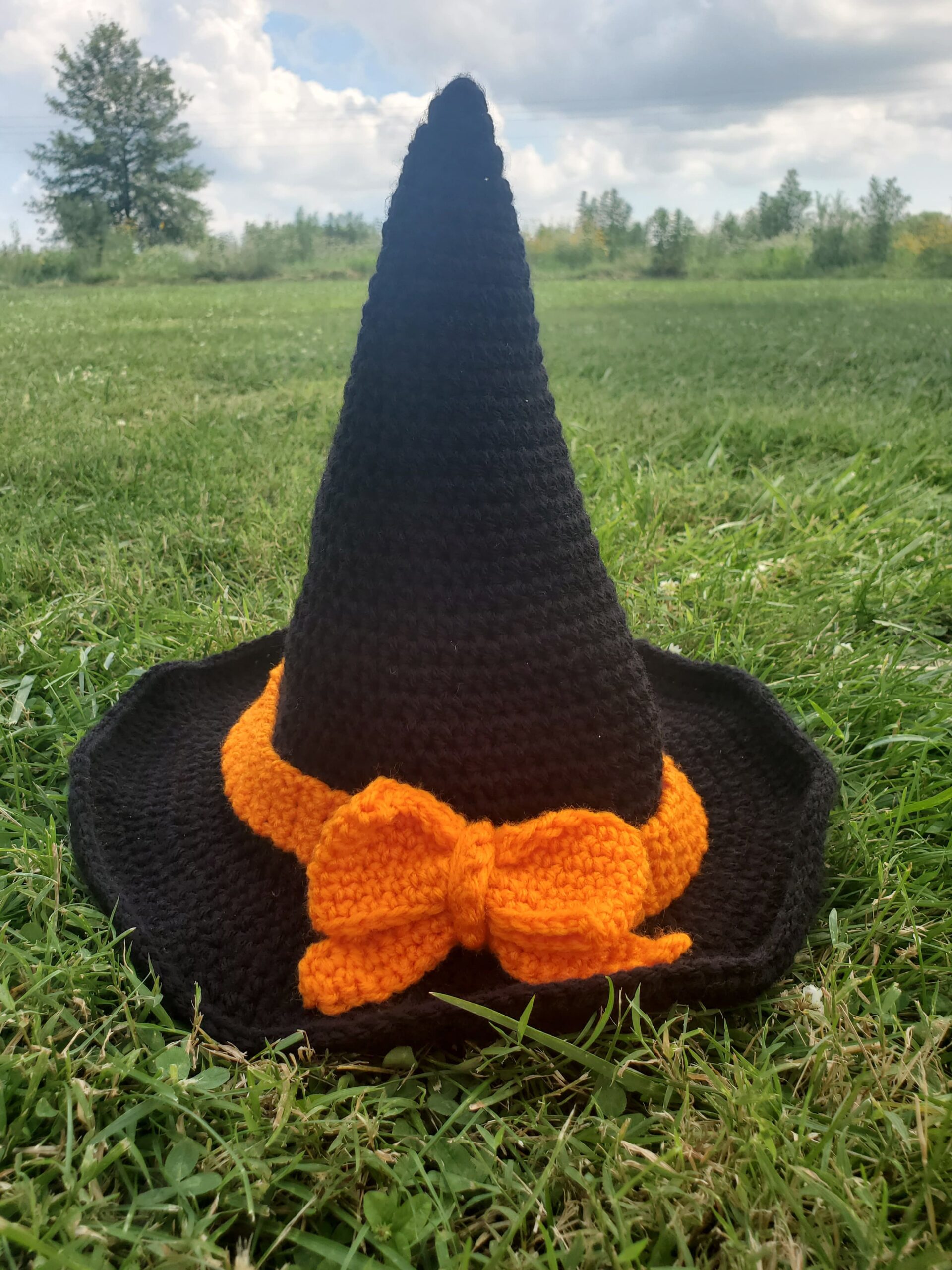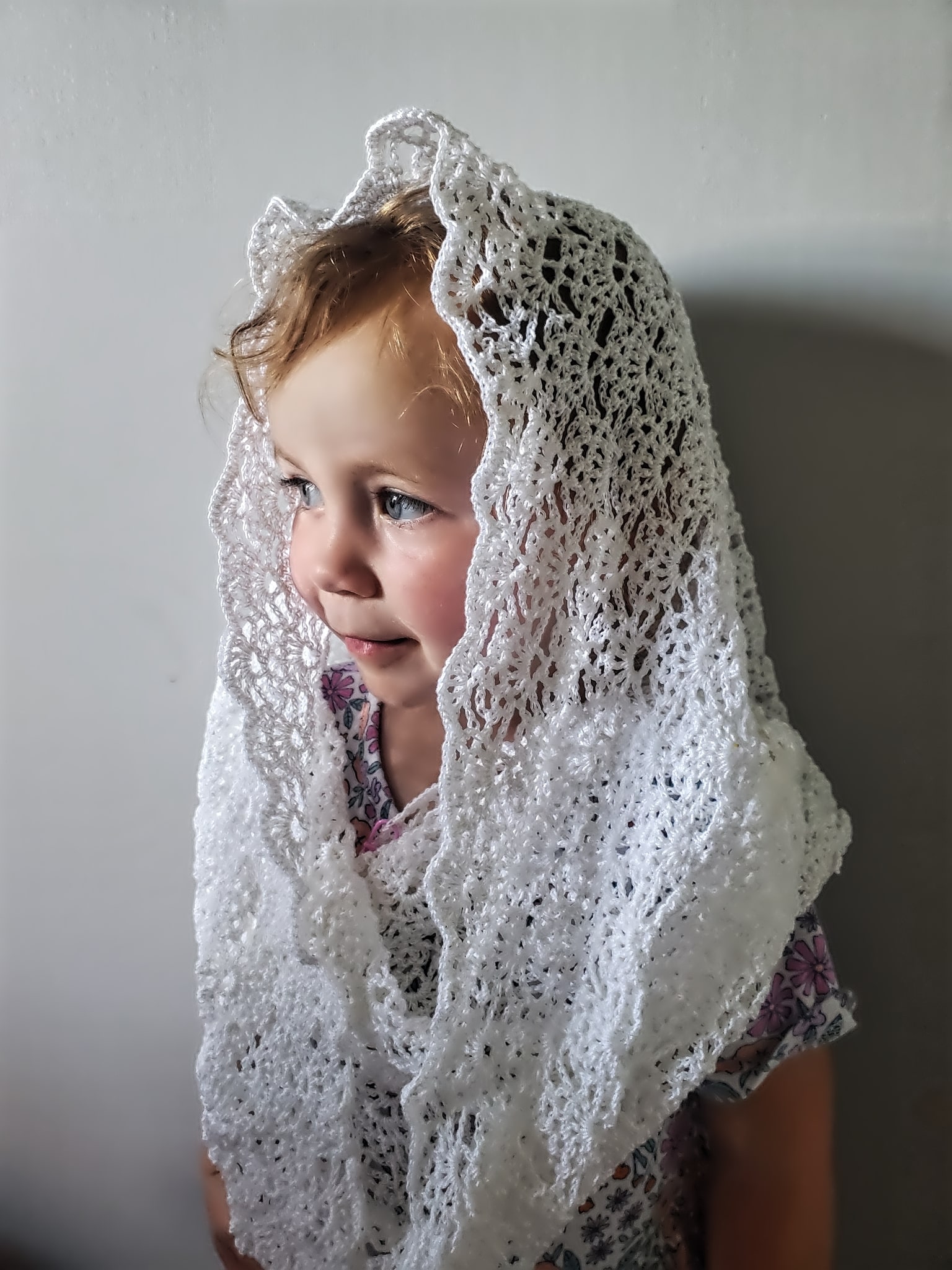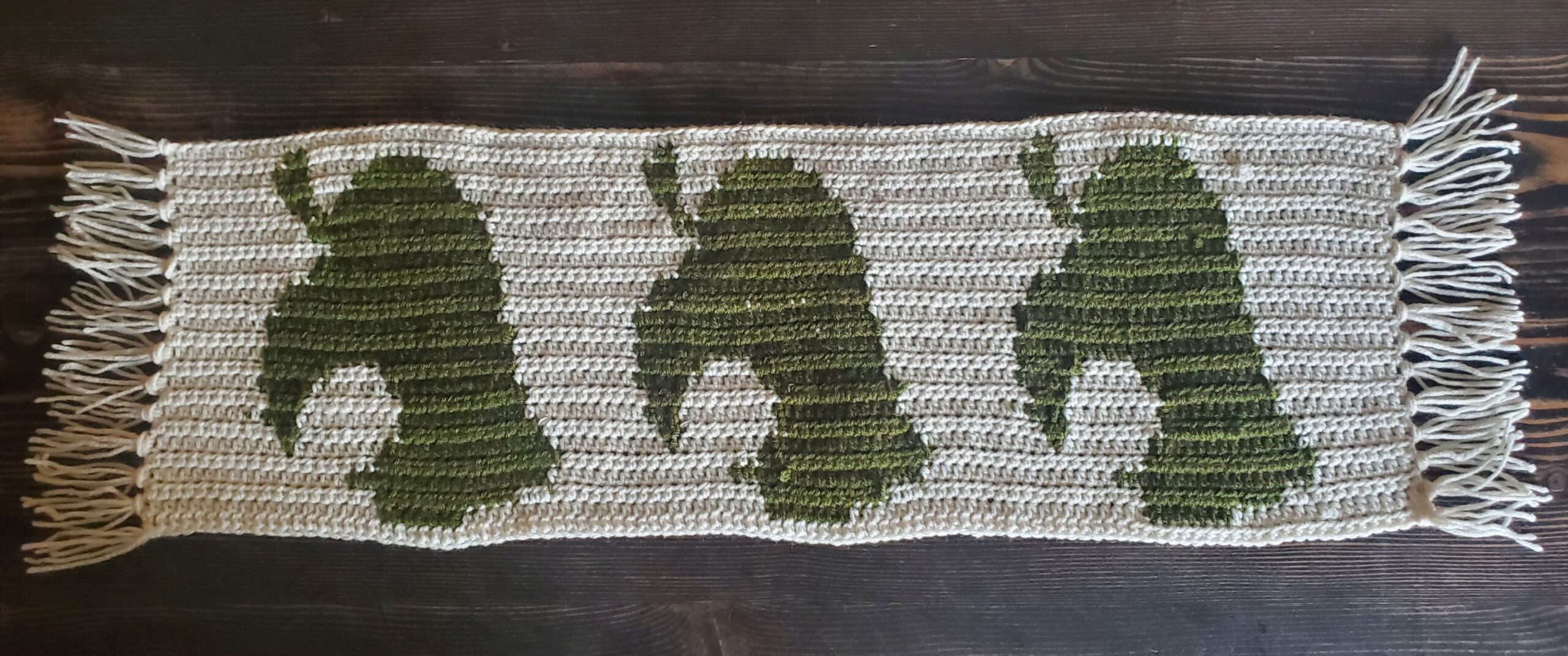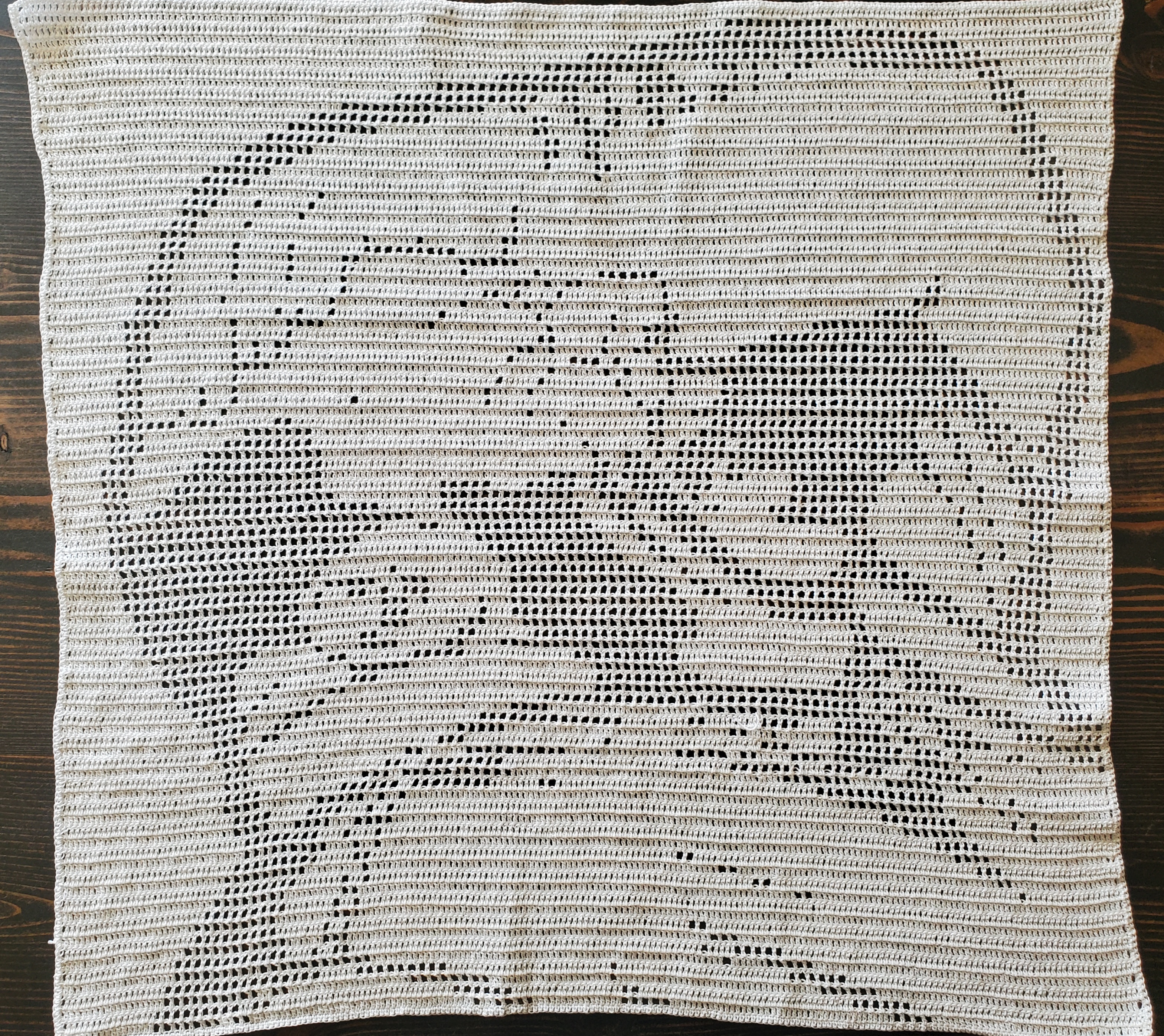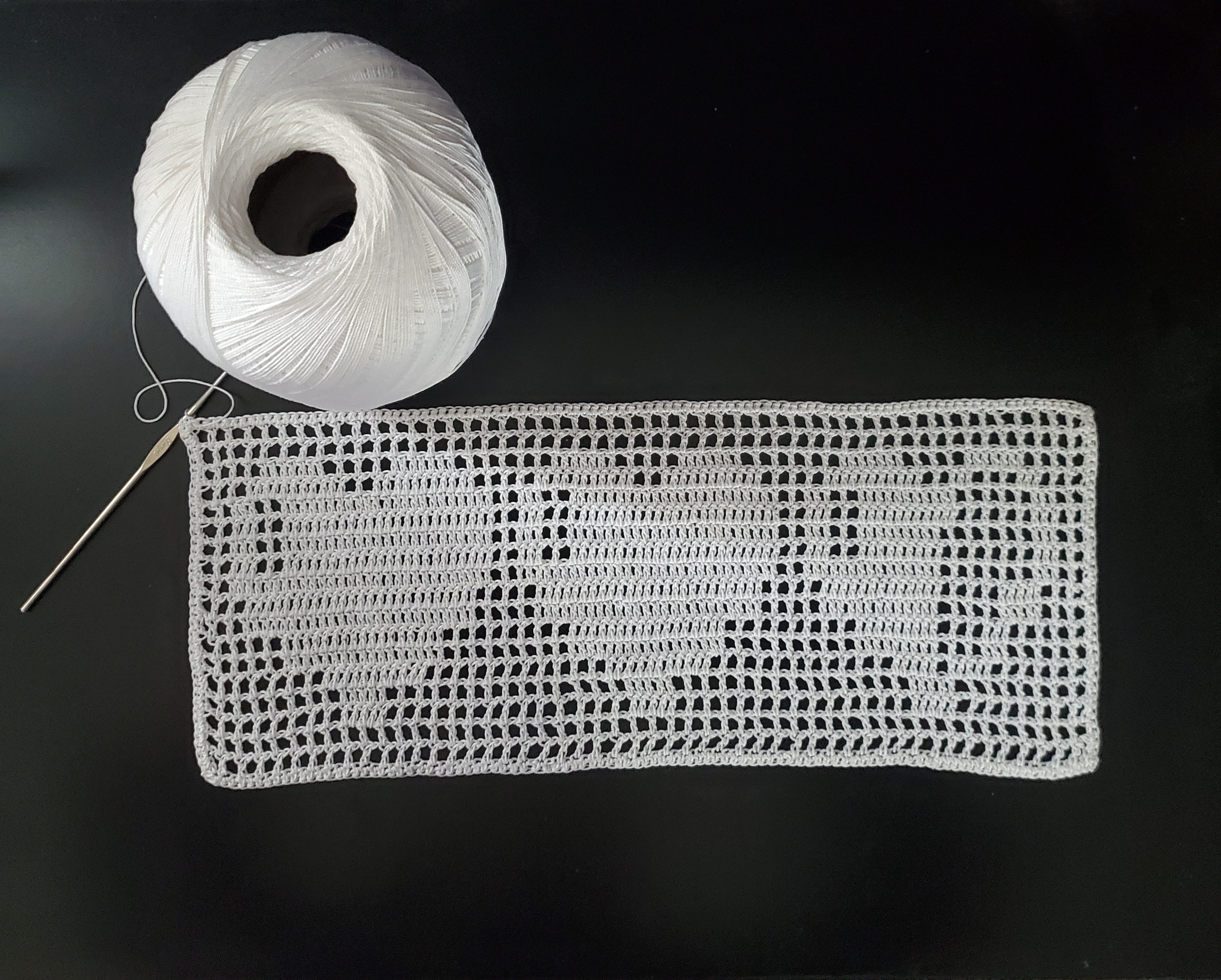Crochet Pikachu Table Runner Part 3/4
Hey everyone, today I have Part 3 of the Crochet Pikachu Table Runner Pattern available for you! You should have Part 1 and Part 2 completed by this point.
If you are not familiar, I am using a technique called filet crochet to make this table runner. More specifically, the 3DC method of filet crochet.
Again, I will be describing the stitches as I did in Part 2. That is, I will be discussing where to place an open and closed square.
Remember: An open square consists of a DC, CH1, skip a st, DC. A closed square consists of 3 DC in a row.
Please note that some of these links may be affiliate links. That means that if you click on these links and make a purchase, I may receive a commission at no extra cost to you. You can find more information about our disclosure policy here. Thank you for your support.
Materials:
- White Crochet Thread from Red Heart Super Saver Size 10, 1000 yards x 1
- 1.65 mm crochet hook
- Scissors
- Tapestry Needle
- Stitch Marker (optional)
Size:
10.5 in x 58 in
Please note that your size may differ depending on your tension
Abbreviations:
Please note that these are in US terms not UK
- ST(s) – stitch(es)
- SL ST – slip stitch
- CH – chain
- SC – single crochet
- DC – double crochet
- CH3 PICOT – chain 3 stitches, slip stitch in last stitch made
Crochet Pikachu Table Runner Part 3/4:
- Row 87: going down, turn, CH4, make 7 open squares, make 5 closed squares, make open squares until end of row. (33 open squares, 5 closed squares).
- Row 88: going up, turn, CH4, make open squares until 1 closed square before previous row, make 6 closed squares, make open squares until end of row. (32 open squares, 6 closed squares).
- Row 89: going down, turn, CH4, make open squares until first closed square from previous row, make 7 closed squares, make open squares until end of row. (31 open squares, 7 closed squares).
- Row 90: going up, turn, CH4, make open squares until first closed square from previous row, make 7 closed squares, make open squares until end of row. (31 open squares, 7 closed squares).
- Row 91: going down, turn CH4, make open squares until first closed square from previous row, make 1 more open square, make 6 closed squares, make open squares until end of row. (32 open squares, 6 closed squares).
- Row 92: going up, turn, CH4, make open squares until first closed square from previous row, make 6 closed squares, make open squares until end of row. (32 open squares, 6 closed squares).
- Row 93: going down, turn, CH4, make open squares until first closed square from previous row, make 6 closed squares, make open squares until end of row. (32 open squares, 6 closed squares).
- Row 94: going up, turn, CH4, make open squares until 3 squares away from first closed square from previous row, make 8 closed squares, make open squares until end of row. (30 open squares, 8 closed squares).
- Row 95: going down, turn, CH4, make open squares until first closed square from previous row, make 8 closed squares, make open squares until end of row. (30 open squares, 8 closed squares).
- Row 96: going up, turn, CH4, make open squares until 3 squares away from first closed square from previous row, make 11 closed squares, make open squares until end of row. (27 open squares, 11 closed squares).
- Row 97: going down, turn, CH4, make open squares until first closed square from previous row, make 5 more open squares, make 6 closed squares, make open squares until end of row. (32 open squares, 6 closed squares).
- Row 98: going up, turn, CH4, make 2 open squares, make 4 closed squares, make 11 open squares, make 2 closed squares, make 1 open square, make 4 closed squares, make open squares until end of row. (28, open squares, 10 closed squares).
- Row 99: going down, turn, CH4, make open squares until first closed square from previous row, make 3 more open squares, make 2 closed squares, make 2 open squares, make 1 closed square, make 9 open squares, make 5 closed squares, make 2 open squares. (30 open squares, 8 closed squares).
- Row 100: going up, turn, CH4, make 3 open squares, make 1 closed square, make 6 closed squares, make 3 open squares, make 2 closed squares, make 1 open square, make 3 closed squares, make open squares until end of row. (26 open squares, 12 closed squares).
- Row 101: going down, turn, CH4, make open squares until first closed square from previous row, make 3 more open squares, make 11 closed squares, make 1 open square, make 2 closed squares, make 3 open squares. (25 open squares, 13 closed squares).
- Row 102: going up, turn, CH4, make 4 open squares, make, 13 closed squares, make open squares until end of row. (25 open squares, 13 closed squares).
- Row 103: going down, turn, CH4, make open squares until 1 closed square before first closed square from previous row, make 13 closed squares, make 5 open squares. (25 open squares, 13 closed squares).
- Row 104: going up, turn, CH4, make 5 open squares, make 13 closed squares, make open squares until end of row. (25 open squares, 13 closed squares).
- Row 105: going down, turn, CH4, make open squares until 1 closed square before first closed square from previous row, make 1 closed square, make 2 open squares, make 11 closed squares, make 5 open squares. (26 open squares, 12 closed squares).
- Row 106: going up, turn, CH4, make open squares until first closed square from previous row, make 1 more open square, make 9 closed squares, make 3 open squares, make 1 open square, make open squares until end of row. (28 open squares, 10 closed squares).
- Row 107: going down, turn, CH4, make open squares until 1 square before first closed square from previous row, make 3 closed squares, make 3 open squares, make 8 closed squares, make open squares until end of row. (27 open squares, 11 closed squares).
- Row 108: going up, turn, CH4, make open squares until first closed square from previous row, make 1 more open square, make 13 closed squares, make open squares until end of row. (25 open squares, 13 closed squares).
- Row 109: going down, turn, CH4, make open squares until first closed square from previous row, make 13 closed squares, make open squares until end of row. (25 open squares, 13 closed squares).
- Row 110: going up, turn, CH4, make open squares until first closed square from previous row, make 13 closed squares, make open squares until end of row. (25 open squares, 13 closed squares).
- Row 111: going down, turn, CH4, make 12 open squares, make 2 closed squares, make 4 open squares, make 1 closed square, make 3 open squares, make 9 closed squares, make open squares until end of row. (26 open squares, 12 closed squares).
- Row 112: going up, turn, CH4, make open squares until first closed square from previous row, make 1 more open square, make 7 closed squares, make 4 open squares, make 1 closed square, make 4 open squares, make 2 closed squares, make open squares until end of row. (28 open squares, 10 closed squares).
- Row 113: going down, turn, CH4, make open squares until 1 square before first closed square from previous row, make 1 closed square, make 2 open squares, make 1 closed square, make 2 open squares, make 13 closed squares, make open squares until end of row. (23 open squares, 15 closed squares).
- Row 114: going up, turn, CH4, make open squares until first closed square from previous row, make 13 closed squares, make 1 open square, make 1 closed square, make 3 open squares, make 1 closed square, make open squares until end of row. (23 open squares, 15 closed squares).
- Row 115: going down, turn, CH4, make open squares until first closed square from previous row, make 1 closed square, make 1 open square, make 3 closed squares, make 1 open square, make 13 closed squares. (21 open squares, 17 closed squares).
- Row 116: going up, turn, CH4, make open squares until first closed square from previous row, make 1 more open square, make 12 closed squares, make 1 open square, make 3 closed squares, make 1 open square, make 1 closed square, make open squares until end of row. (22 open squares, 16 closed squares).
- Row 117: going down, turn, CH4, make open squares until first closed square from previous row, make 1 closed square, make 1 open square, make 16 closed squares, make open squares until end of row. (22 open squares, 16 closed squares).
- Row 118: going up, turn, CH4, make open squares until first closed square from previous row, make 12 closed squares, make 1 open square, make 3 closed squares, make 1 open square, make 1 closed square, make open squares until end of row. (22 open squares, 16 closed squares).
- Row 119: going down, turn, CH4, make open squares until first closed square from previous row, make 1 more open square, make 1 closed square, make 1 open square, make 2 closed squares, make 1 open square, make 12 closed squares. (23 open squares, 15 closed squares).
- Row 120: going up, turn, CH4, make open squares until first closed square from previous row, make 15 closed squares, make 1 open square, make 1 closed square, make open squares until end of row. (22 open squares, 16 closed squares).
- Row 121: going down, turn, CH4, make open squares until first closed square from previous row, make 1 more open square, make 11 closed squares, make 1 open square, make 4 closed squares, make open squares until end of row. (23 open squares, 15 closed squares).
- Row 122: going up, turn, CH4, make open squares until 1 square before first closed square of previous row, make 5 closed squares, make 1 open square, make 1 closed square, make 2 open squares, make 8 closed squares. (24 open squares, 14 closed squares).
- Row 123: going down, turn, CH4, make open squares until first closed square from previous row, make 1 more open square, make 6 closed squares, make 4 open squares, make 1 closed square, make 1 open square, make 4 closed squares, make open squares until end of row. (27 open squares, 11 closed squares).
- Row 124: going up, turn, CH4, make open squares until first closed square from previous row, make 7 closed squares, make 2 open squares, make 7 closed squares, make open squares until end of row. (24 open squares, 14 closed squares).
- Row 125: going down, turn, CH4, make open squares until first closed square from previous row, make 11 closed squares, make 2 open squares, make 3 closed squares, make open squares until end of row. (24 open squares, 14 closed squares).
- Row 126: going up, turn, CH4, make open squares until first closed square from previous row, make 3 closed squares, make 2 open squares, make 4 closed squares, make 3 open squares, make 4 closed squares, make open squares until end of row. (27 open squares, 11 closed squares).
- Row 127: going down, turn, CH4, make open squares until first closed square from previous row, make 1 more open square, make 10 closed squares, make 1 open square, make 4 closed squares, make open squares until end of row. (24 open squares, 14 closed squares).
- Row 128: going up, turn, CH4, make open squares until first closed square from previous row, make 2 more open squares, make 12 closed squares, make open squares until end of row. (26 open squares, 12 closed squares).
- Row 129: going down, turn, CH4, make open squares until first closed square from previous row, make 2 more open squares, make 6 closed squares, make 2 open squares, make 1 closed square, make open squares until end of row. (31 open squares, 7 closed squares).
- Row 130: going up, turn, CH4, make 16 open squares, make 2 closed squares, make open squares until end of row. (36 open squares, 2 closed squares).
- Row 131-132: going down, then going up, turn, CH4, make open squares until end of row. (38 open squares).
Pikachu number 3 is complete! Only 1 more to go!
Pat yourself on the back for making it this far. Take a break, let your hands rest, and we’ll continue on to Part 4 of the Crochet Pikachu Table Runner.

